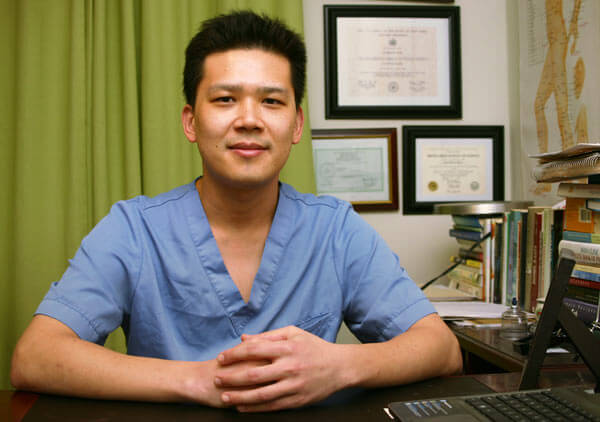By Joe Anuta
Signs point to an increasing interest in traditional Chinese medicine in the Western world, and a Flushing doctor has jumped into the competitive downtown market to offer a natural approach to treating certain chronic conditions.
Taehoon Kim runs Regen Acupuncture PC in an intimate office on the ground floor of 143-30 38th Ave., Suite 1L, and offers a set of treatments that serve as a holistic alternative to several Western treatments.
“I don’t discount Western medicine, but I feel that for chronic conditions, traditional Chinese medicine is better,” said Kim, who was born in Korea but grew up in Queens before attending New York University and later getting his acupuncture license. “We don’t give harsh medicine that can have a lot of side effects.”
Most of Kim’s patients come in with chronic lower back pain or neck and shoulder pain, but he also serves a significant number suffering from arthritis, high blood pressure, high cholesterol, Type II diabetes and even bowel issues.
The idea behind Chinese medicine is to use natural treatments instead of drugs. Kim employs a process known as cupping, acupuncture and combinations of Chinese herbs — all doled out in addition to lifestyle, exercise and dietary suggestions.
Acupuncture is the process of poking tiny needles into the skin at strategic locations to relieve pain. Traditional Chinese medicine describes the strategic pinpoints as locations where an energy that runs through the body called Qi can become blocked and can cause various complications. The pins release this energy. Western medicine explains the acupuncture needles as activating neurons in the brain that in turn release natural opiates like serotonin, which can ease pain.
Cupping is the process of putting the rim of a glass or plastic cup against the skin and sucking air out through the back. The resulting vacuum pulls the skin upward into the cup, and whatever blood is in the area gets pulled up along with it. This, according to Kim, creates a sort of controlled bruise. When the body senses a bruise, it increases blood circulation to that area, which can speed the healing process to a long-afflicted area, according to Kim.
The lower back, a source of many patient complaints, does not typically get a lot of blood circulation, which is why Kim said cupping can help.
Another way to treat patients is through prescribing mixtures of Chinese herbs. These prescriptions have a history dating thousands of years back to the origins of traditional medicine in the East Asian country.
And that record, according to Kim, is one of the reasons why he believes more people are turning to Eastern medical practices.
Most of the doctor’s patients are non-Asian residents from all five boroughs. Increasingly, they are referred from doctors practicing Western medicine. And since Kim was born in Asia, lived briefly in South America and was ultimately raised in America, he has the unique background to connect with his diverse clientele.
Some Western pharmaceutical companies are even investing in traditional Chinese medicine companies overseas. Nestle Health Science, for example, agreed to a joint venture with a Hong Kong-based firm in November.
Kim believes that Eastern and Western medicines should exist side by side, since they can often complement each other.
“I believe there are forces in our body that the scientific model can’t explain. Science is just one model for understanding the world — that is why some people turn to religion,” he said. “You have to look at Chinese medicine and philosophy as another model.”
Reach reporter Joe Anuta by e-mail at januta@cnglocal.com or by phone at 718-260-4566.


































